Abstract
When 5-mm maize root tips were excised and placed in an inorganic salts solution for 6 hours, there was a loss of alcohol-insoluble nitrogen. The levels of threonine, proline, valine, isoleucine, leucine, tyrosine, phenylalanine, and lysine in the alcohol soluble fraction were severely reduced, whereas those of glutamate, aspartate, ornithine, and alanine were scarcely affected. There was a 4-fold increase in the level of γ-aminobutyrate. Those amino acids whose synthesis appeared to be deficient in excised root tips also showed poor incorporation of acetate carbon. In addition, the results show that asparagine and the amino acids of the neutral and basic fraction were preferentially transported to the root tip region. The results therefore suggest that the synthesis of certain amino acids in the root tip region is restricted, and that this requirement for amino acids in the growing region could regulate the flow of amino acids to the root tip.
Full text
PDF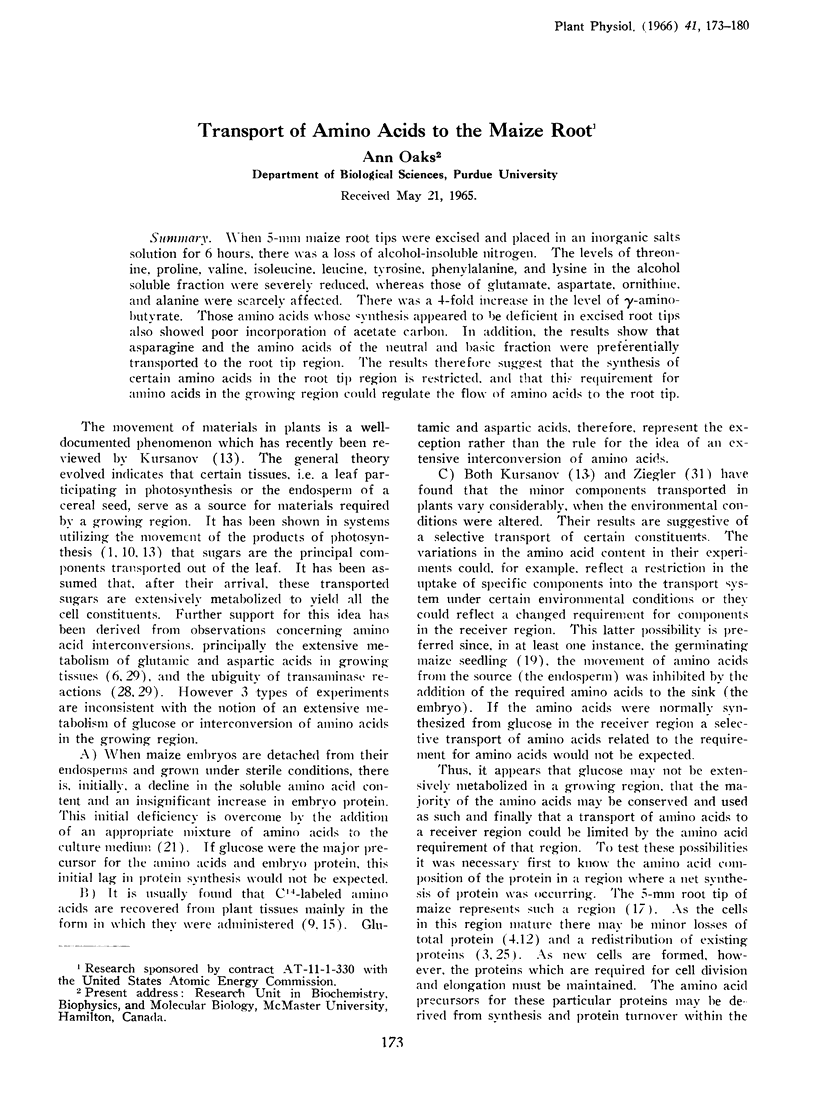
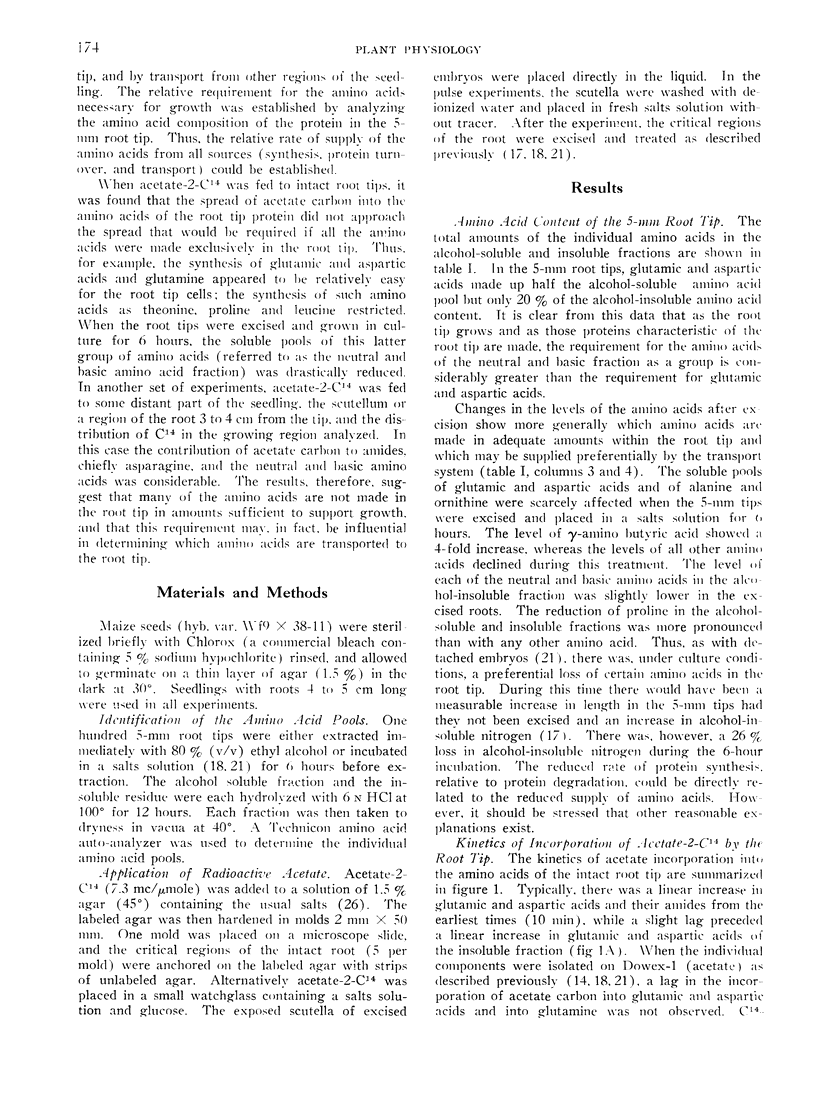
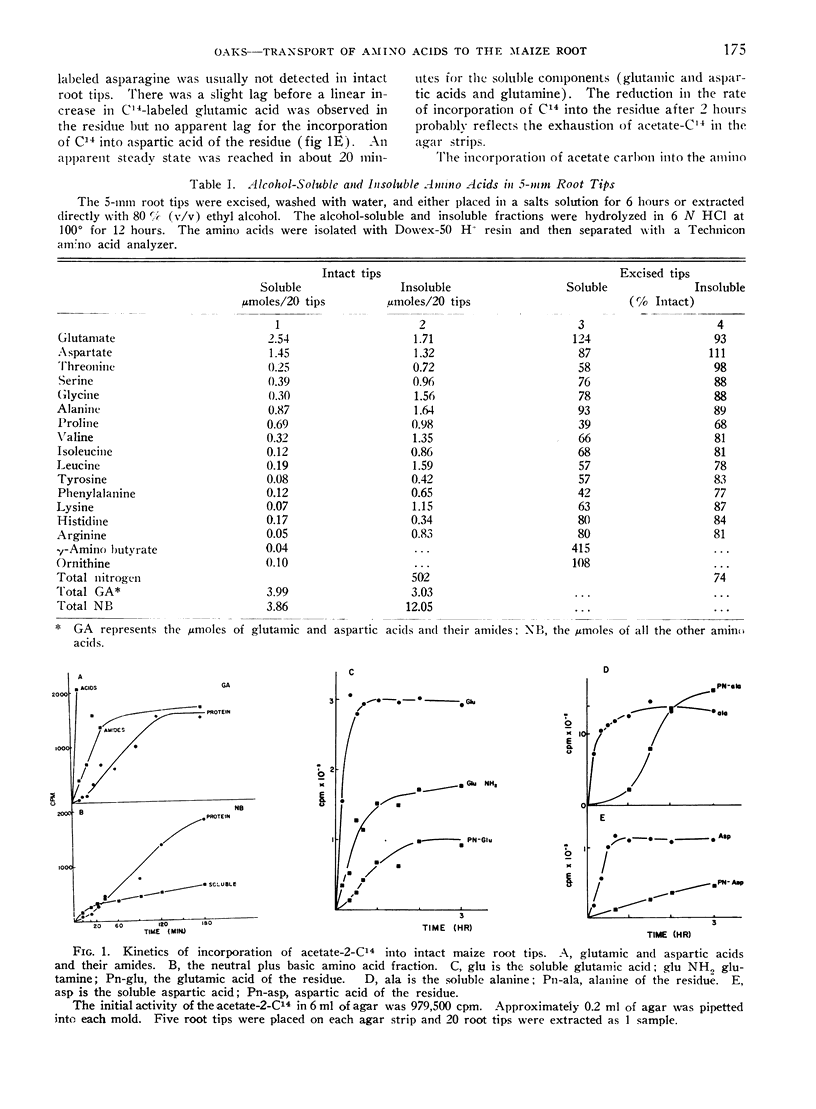
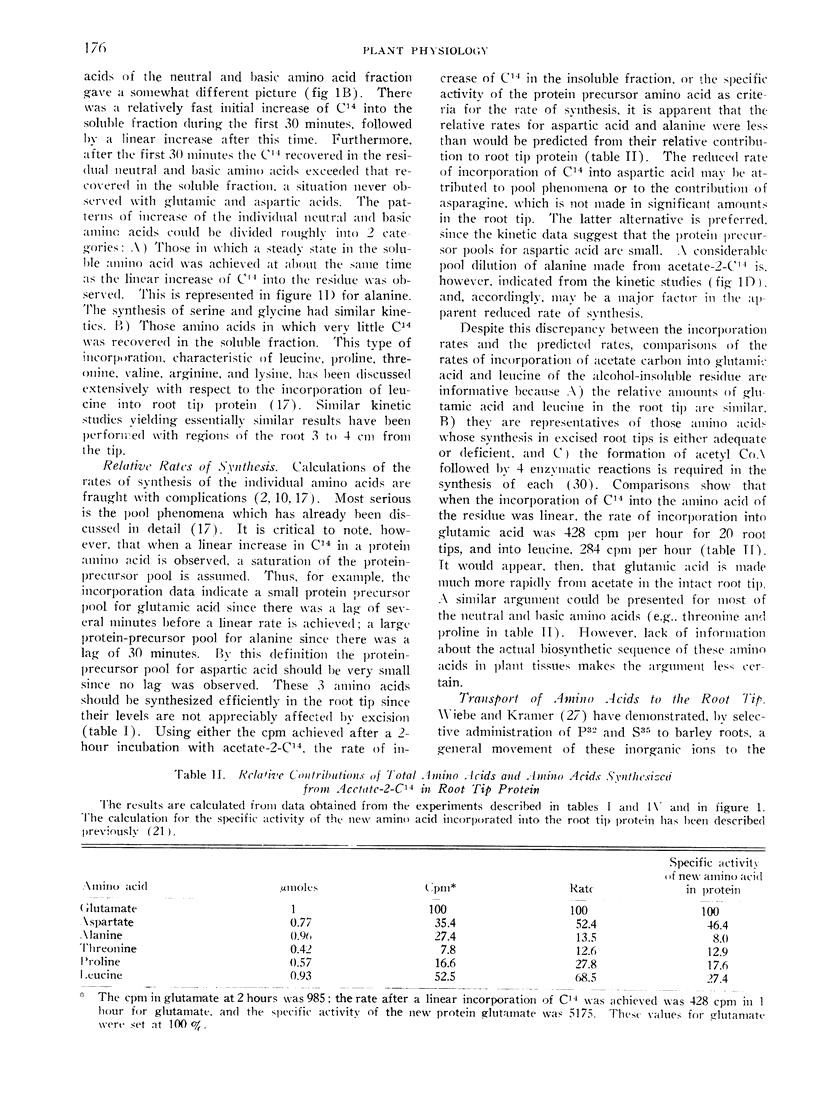
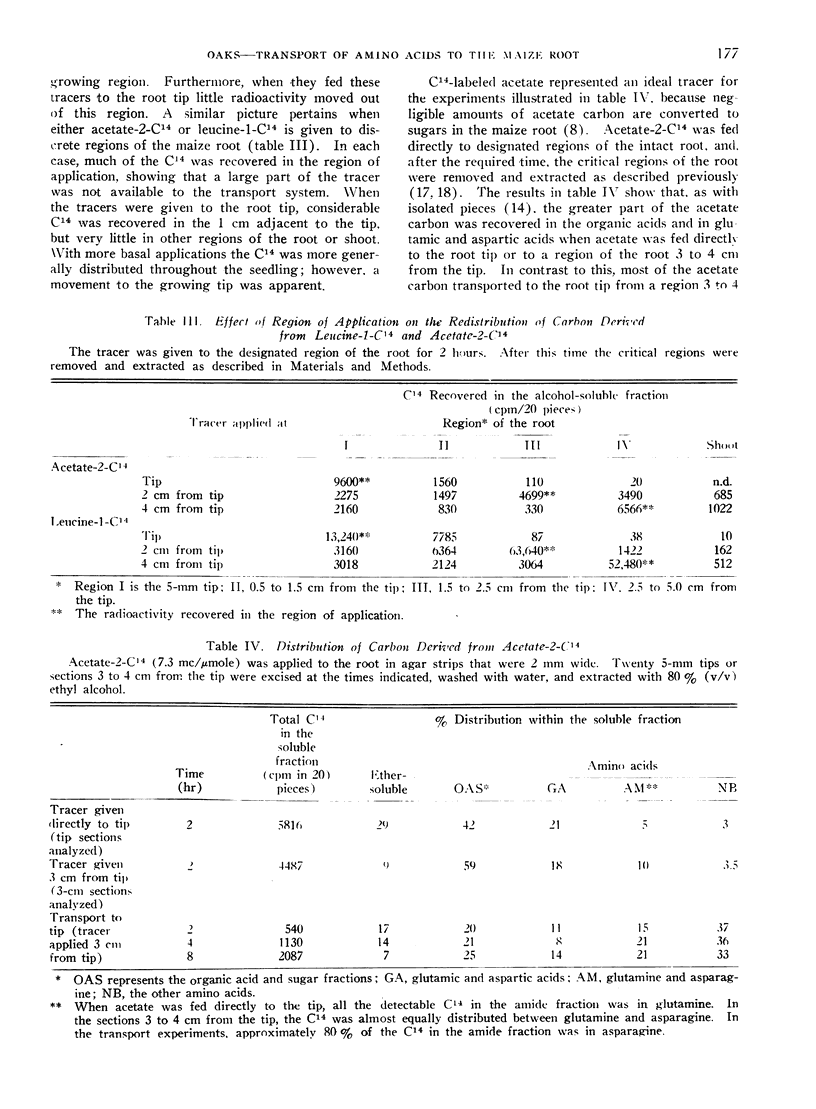
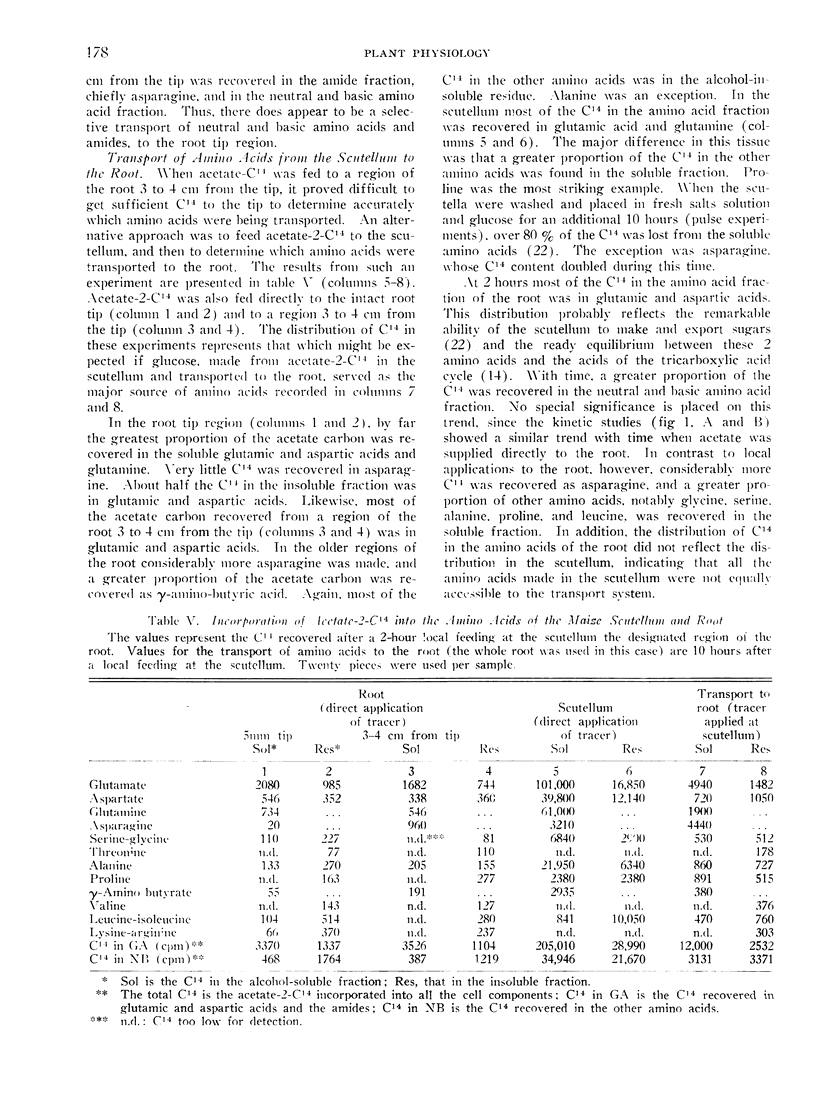
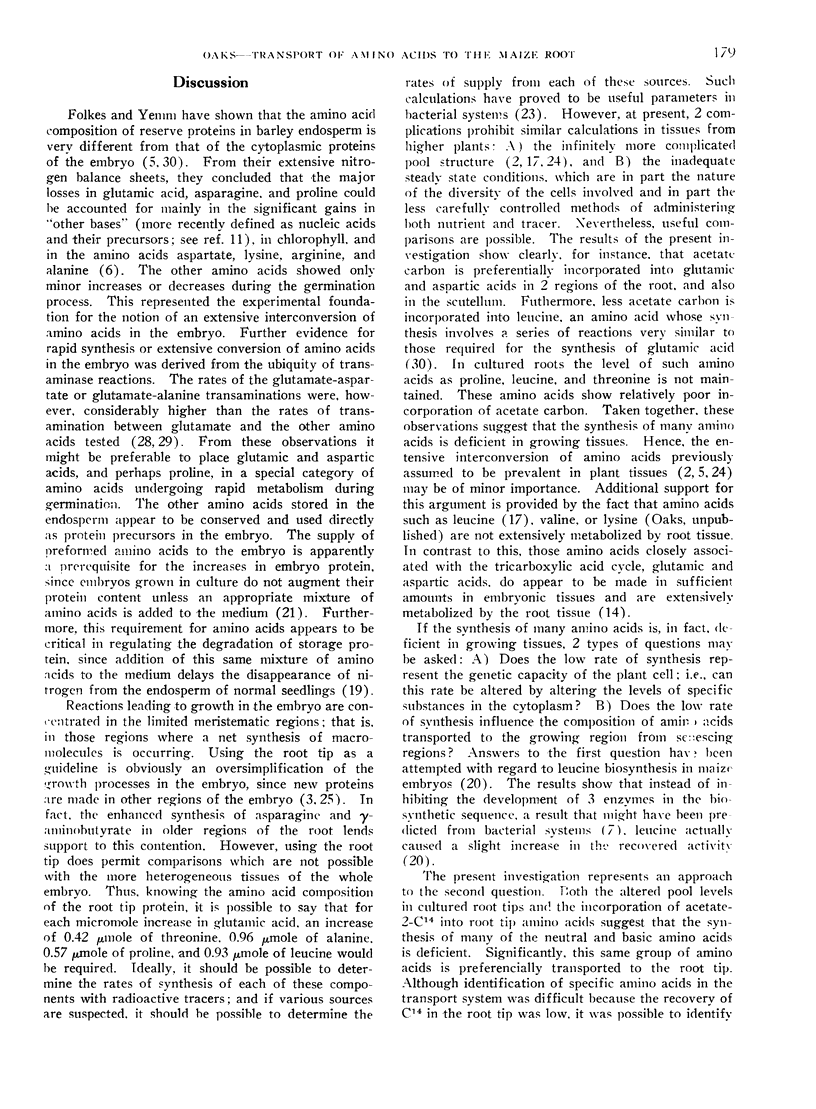
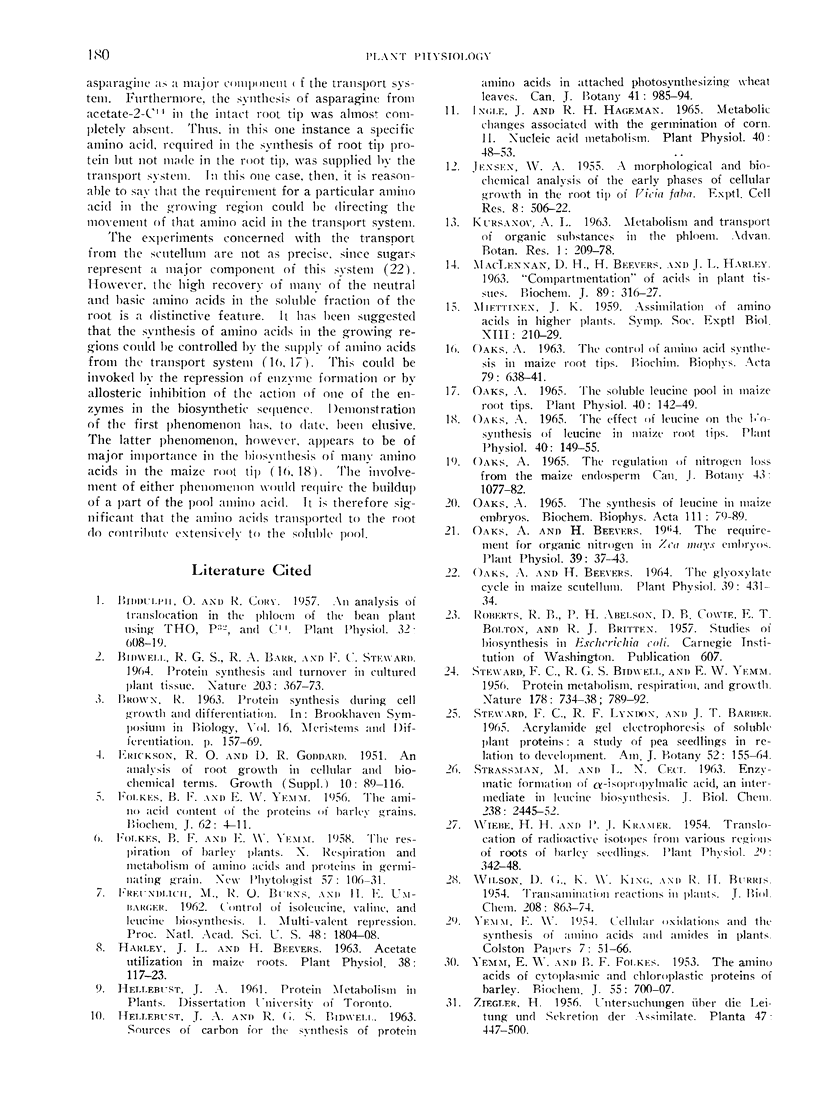
Selected References
These references are in PubMed. This may not be the complete list of references from this article.
- Harley J. L., Beevers H. Acetate Utilization by Maize Roots. Plant Physiol. 1963 Jan;38(1):117–123. doi: 10.1104/pp.38.1.117. [DOI] [PMC free article] [PubMed] [Google Scholar]
- Oaks A. The soluble leucine pool in maize root tips. Plant Physiol. 1965 Jan;40(1):142–149. doi: 10.1104/pp.40.1.142. [DOI] [PMC free article] [PubMed] [Google Scholar]
- STEWARD F. C., LYNDON R. F., BARBER J. T. ACRYLAMIDE GEL ELECTROPHORESIS OF SOLUBLE PLANT PROTEINS: A STUDY ON PEA SEEDLINGS IN RELATION TO DEVELOPMENT. Am J Bot. 1965 Feb;52:155–164. [PubMed] [Google Scholar]


